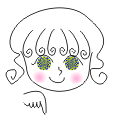 Illusion designs from friends #3
Illusion designs from friends #3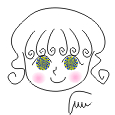
 Illusion designs from friends #3
Illusion designs from friends #3
The copyright of each image belongs to the corresponding creator, to whom contact should be addressed in the case of request for use (even if it is for educational, research or personal use).
since October 28, 2005
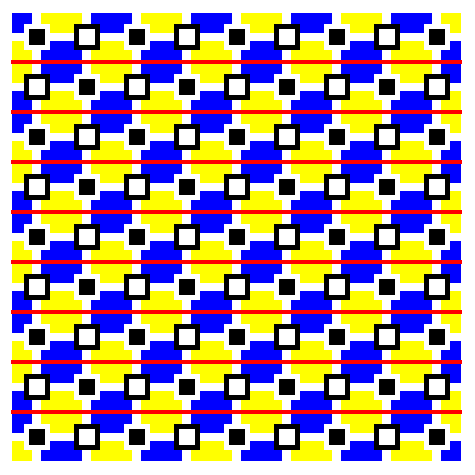
"Red lines"
Red lines appear to wave.
Copyright Keizo Shimizu 2006
from Keizo SHIMIZU, Kobe, Japan, May 16, 2006
Akiyoshi's comment: I imagine that this effect is based upon chromatic abberation.
My related works
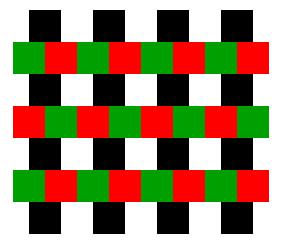
"The Shonan-shinjuku line"*
*A railway line that connects the north outskirts and the south ones of Tokyo
Although red squares and green ones are aligned, they sometimes appear to be misaligned. The direction of misalignment can be reversed by seeing the figure through the periphery of glasses if you wear them.
Copyright A.Kitaoka 2003
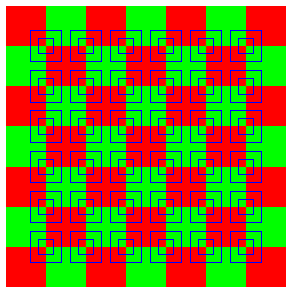
"Gaku ga gakugaku"*
*Frames are misaligned.
Blue frames that form squares appear to be misaligned at the borders between red and green. I imagine some people do not see this illusion. In addition, the Hermann grid illusion and von Bezold's chromatic assimilation can be observed.
Copyright A.Kitaoka 2003 (June 16, 2003)
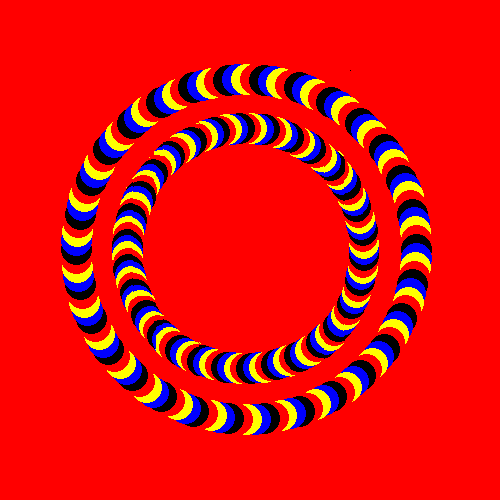
"Two rings"
Yellow crescents sometimes appear to be white. This effect is stronger in the inner ring.
Copyright Keizo Shimizu 2006
from Keizo SHIMIZU, Kobe, Japan, May 16, 2006
Akiyoshi's comment: I imagine that this effect is adjacent chromatic assimilation.
My related works
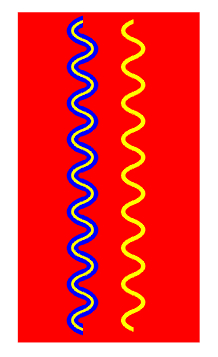
"White-line snake "
The inner wave in the left snake appears to be white, but it is actually yellow just as the right one.
Copyright Akiyoshi Kitaoka 2006 (May 16)
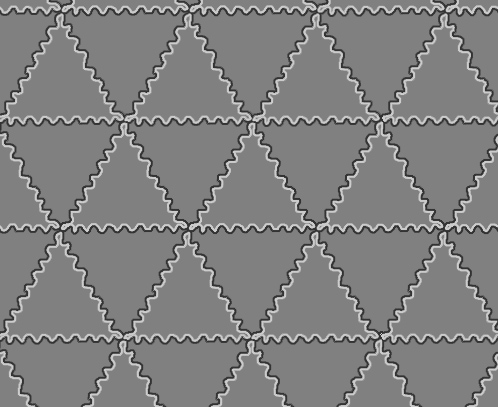
"Sanrin in snow"
The triangles appear to be lighter than the reverse triangles, though they are identical in luminance. This illusion depends on the Noguchi-Takashima effect.
Copyright Midori Takashima 2006
Dr. Midori Takashima, Nohon University, Tokyo, Japan, April 10, 2006
Akiyoshi's comment: Lovely!

Sanrin, a Japanese traditional pattern
"Sanrin" also refers to woods in Japanese.
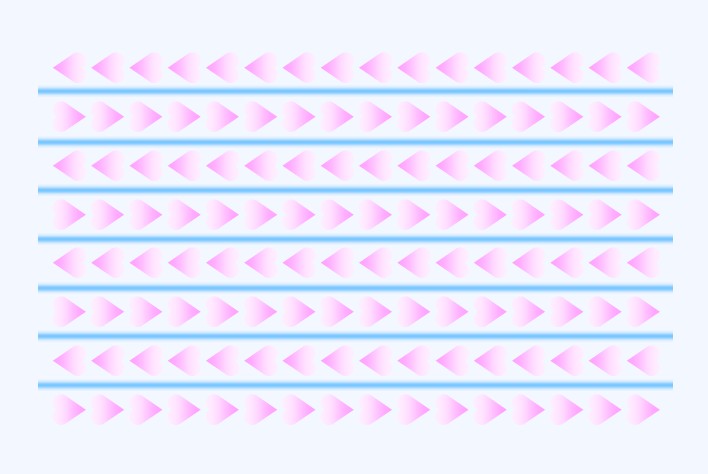
"Streaming hearts"
The horizontal blue lines appear to curve. In addition, the rows of hearts appear to move.
Copyright Tomomi HATANO 2006
Tomomi Hatano, Ritsumeikan University, Kyoto, Japan, March 21, 2006
Akiyoshi's comment: Excellent!
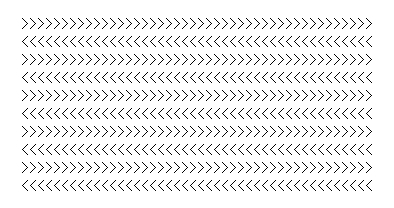
"Hatano's curvature illusion"
The horizontal subjective contours appear to curve.
Copyright Tomomi HATANO 2006
Tomomi Hatano, Ritsumeikan University, Kyoto, Japan, March 20, 2006
Akiyoshi's comment: Excellent! I think this is not mere a variant of the Zöllner illusion.
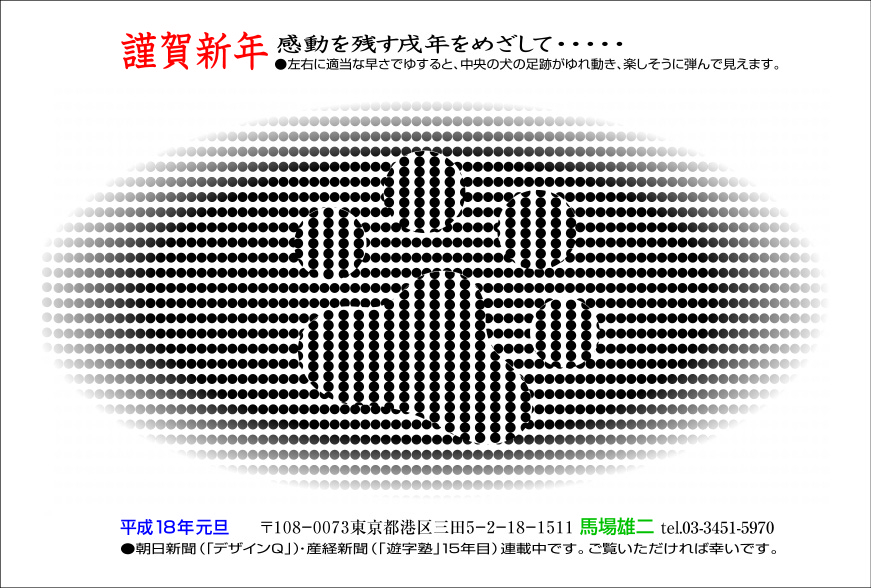
"Professor Baba's nenga-jo"
The footprint of a dog appears to move.
Copyright Yuji Baba 2006
Professor Yuji Baba, Tohoku University of Art and Design, Yamagata, Japan, January 8, 2006
Akiyoshi's comment: I point out another illusion that the surounding white "mist" appears to contract.
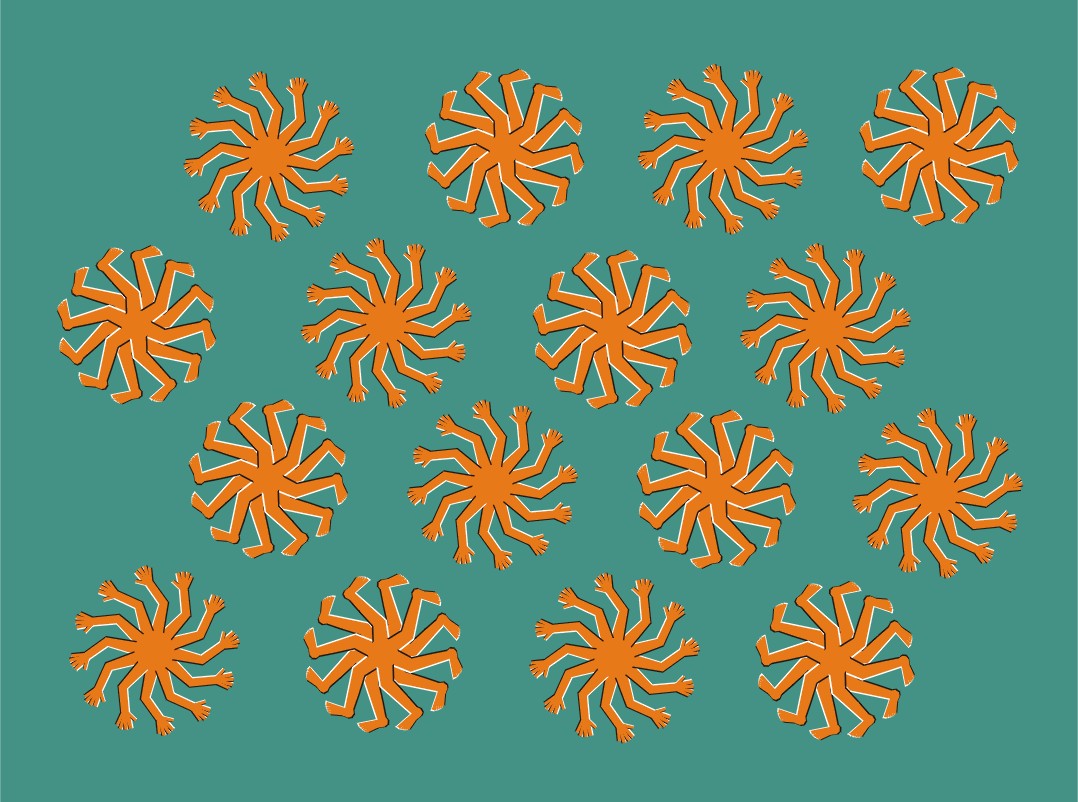
"Dance of gods"
Copyright Constantin Shebzukhov 2005
Mr. Shebzukhov, Moscow, Russia, December 29, 2005
Akiyoshi's comment: Excellent!

"Eagles"
Copyright Constantin Shebzukhov 2005
Mr. Shebzukhov, Moscow, Russia, December 13, 2005
Akiyoshi's comment: Excellent!

"Phantom smile"
Copyright Constantin Shebzukhov 2005
Mr. Shebzukhov, Moscow, Russia, December 13, 2005
Akiyoshi's comment: Excellent!

"Dance"
Copyright Constantin Shebzukhov 2005
Mr. Shebzukhov, Moscow, Russia, December 13, 2005
Akiyoshi's comment: Great!

"Floating zero"
The blue zero appears to float in front of the red background when the author see this image from less than 1 meter apart, while it appears to be behind the red background when the author see this image from more than 1 meter apart.
Copyright Keizo Shimizu 2005
from Keizo SHIMIZU, Kobe, Japan, November 11, 2005
Akiyoshi's comment: This phenomenon is called 'chromostereopsis'. Many observers see either red in front of blue or blue in front of red when they observe images from more than 1 meter apart, while they do not see chromostereopsis when they observe images from near.
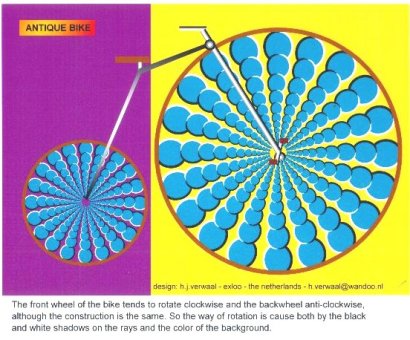
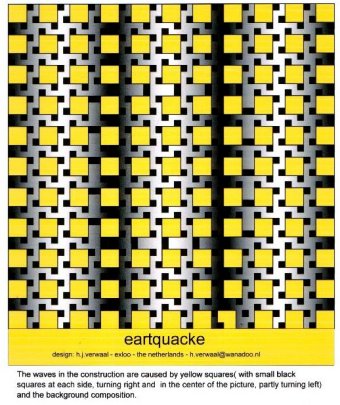
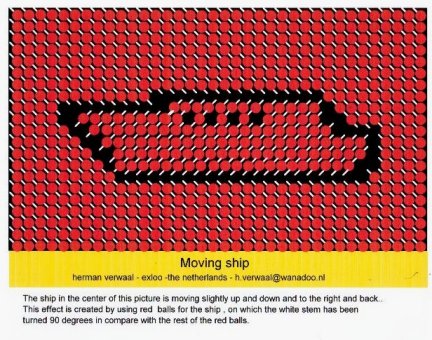
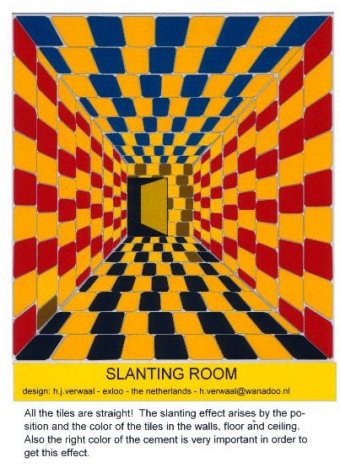
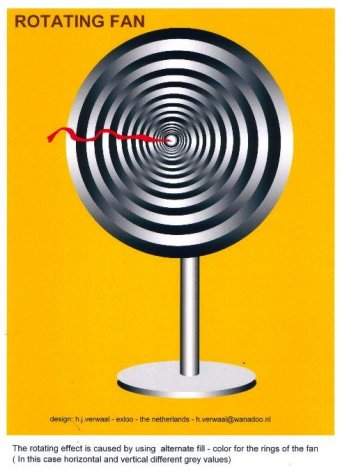
"Herman's works ver. 2005/11/14"
Copyright Herman Verwaal 2005
from Herman J. Verwaal, Exloo, Netherland, November 14, 2005
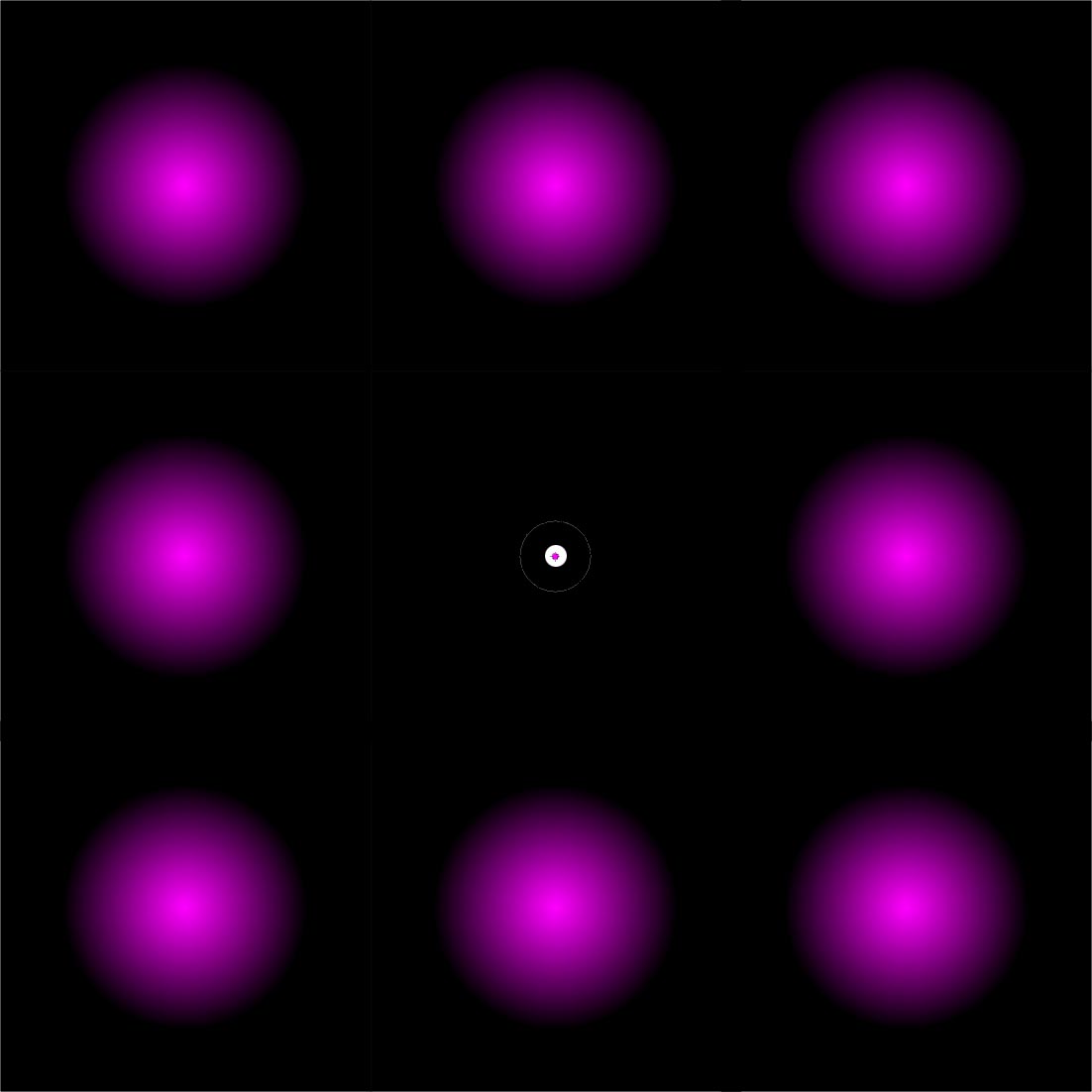
"Vanishing dots"
"If you focus on the dot, the purple spots vanish, coming back when you move your eyes. I assume this is due to the fact that the dots are soft edged and in the peripheral vision which is sensitive to motion. This area presumably quickly discounts the dots as there are no hard edges. However most of the peripheral vision is black and white and this is a strong colour effect, is it just that they are not far enough out of the colour vision filed but the lack of motion effect still exists." (Mike Wilsher)
from Mike Wilsher, October 28, 2005
Akiyoshi's comment: This phenomenon is called the Troxler effect.
Illusion design from friends #2
Illusion design from friends #1